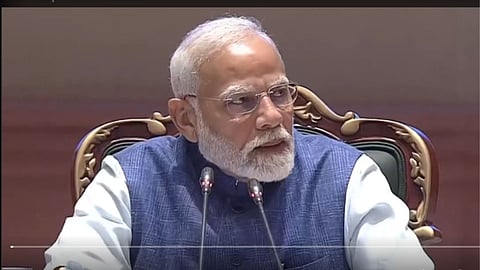

The BJP's return to Delhi after 27 years, one of their strongest showings ever in the national capital, has been boosted in no small way by last week's Union budget, which slashed income tax for the salaried middle class, a key voting bloc in the capital.
The party has made strong inroads with Delhi’s middle class, making up over 60 per cent of the electorate.
“If you look at the pre- and post-budget trackers that we do every year, there was a huge swing among the middle-class voters this year after the Budget was presented. Back in 1998, it was the middle class that dumped the BJP. Almost 30 years later, the same middle class has swung them back to power,” Yashwant Deshmukh, entrepreneur and founder of CVoter Foundation, said.
Ironically, Delhi's substantial middle-class voter base never quite figured in the poll campaign and was largely sidelined in the run-up to the elections.
Delhi, unlike other states and union territories, has a large middle-class population whose voting patterns significantly impact the electoral outcome.
Presenting the budget four days ahead of the February 5 Delhi Assembly polls, Union Finance Minister Nirmala Sitharaman made several announcements aimed at the middle class. Declaring major changes in the income tax slabs, Sitharaman said that no income tax would be payable up to income of ₹12 lakh a year.
That it was a tactical shift in emphasis was clear when, a day before, Prime Minister Narendra Modi invoked Goddess Lakshmi “to bless the poor and middle class of our country”. It seems to have worked.
“Please remember that the middle class is the new ‘caste group’ of India, which nobody is looking at from an electoral perspective. A Brahmin from the middle class has the same values as a Dalit or a Muslim middle class. This is the blueprint for the future,” Deshmukh added.
While there is no consensus on the actual size of India’s middle class, using the classification of those spending between US$2–10 per capita per day, over 60-70 crore people could constitute the middle class. Nearly 75 percent of this middle class is the lower middle class — which spends US$2–4 per capita per day.
(By arrangement with livemint.com)